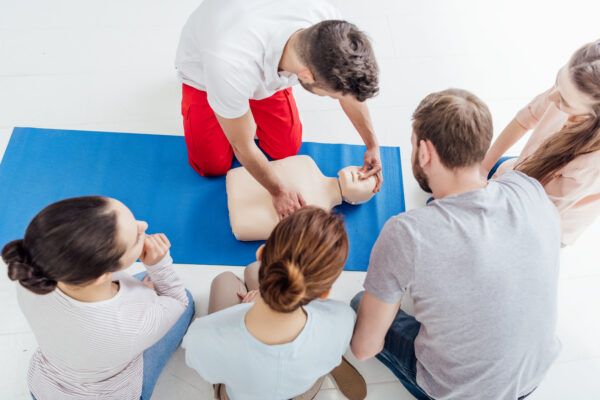Introduction
In today's busy globe, emergency circumstances can develop when we the very least anticipate them. Recognizing how to react efficiently can imply the difference in between life and fatality. This is where sophisticated resuscitation abilities come into play, particularly in cardiopulmonary resuscitation (CPR). The ability to execute CPR correctly can truly conserve lives, making it crucial for both laymans and healthcare experts to be well-versed in the most recent strategies and guidelines. In this thorough guide, we'll check out different aspects of innovative resuscitation abilities, aiding you raise your mouth-to-mouth resuscitation knowledge.

CPR Saving Lives: The Value of Immediate Action
When someone experiences a heart attack, every 2nd matters. The possibility of survival lowers significantly with each passing min without treatment. According to the American Heart Organization, instant CPR can double and even triple an individual's possibility of survival after cardiac first aid refresher training near me arrest.
Understanding Heart Arrest
Cardiac arrest occurs when the heart unexpectedly quits beating. This protects against blood from streaming to essential body organs, consisting of the brain. It's commonly brought on by an arrhythmia-- an irregular heartbeat that interferes with typical circulation.
The Chain of Survival
The "Chain of Survival" is an important concept in emergency situation action:

Each link in this chain is crucial for making the most of survival rates.
Incorrect Compression Deepness: An Usual Pitfall
One of one of the most regular mistakes throughout mouth-to-mouth resuscitation is using inaccurate compression deepness.
Why Compression Deepness Matters
According to the current guidelines, upper body compressions ought to go to least 2 inches deep for grownups but not exceeding 2.4 inches. For youngsters, compressions need to be about 1.5 inches deep.
How to Guarantee Correct Depth
Use Your Body Weight: Lean over the victim to use enough pressure. Count It Out: You can utilize a metronome or sync your compressions with a song like "Stayin' Alive" which has an excellent rhythm. Practice Makes Perfect: Go to local CPR courses to exercise on mannequins under supervision.AED Exactly how to Use: Making Innovation Help You
An Automated External Defibrillator (AED) is a lifesaving device that can deal with abrupt cardiac arrest.
Steps for Making use of an AED
Turn on the AED: A lot of tools will certainly supply voice prompts. Attach Electrode Pads: Position them on the bare upper body as shown by layouts on the pads. Clear the Location: Ensure no person is touching the victim while delivering shocks. Follow Motivates: The AED will certainly assist you with further steps.Training and Familiarization
Make sure you familiarize yourself with AED tools readily available in your location, whether at the office or in public spaces.
CPR and First Aid Combination: A Holistic Approach
Combining mouth-to-mouth resuscitation and emergency treatment training supplies comprehensive emergency situation preparedness.
Why Integrate Training?
Many emergencies require both mouth-to-mouth resuscitation and emergency treatment abilities-- for instance, if someone has actually collapsed and not breathing or if they are choking.
Key First Aid Skills to Find Out Together With CPR
- Control bleeding Treat burns Manage sprains or fractures Respond to allergic reactions
Benefits of Twin Certification
Having twin accreditation enhances your self-confidence and effectiveness during emergencies, making you a very useful asset in any type of situation.
How to Do mouth-to-mouth resuscitation: Step-by-Step Guide
Understanding exactly how to do CPR appropriately is essential for conserving lives.
Adult mouth-to-mouth resuscitation Procedure
Call for aid (911 ). Position hands in the center of the chest. Compress hard and fast (100-120 compressions per minute). Allow complete recoil between compressions. Deliver rescue breaths if trained (30 compressions followed by 2 breaths).Child and Baby Adjustments
The strategy continues to be similar yet requires changes: first aid and cpr courses brisbane
- For kids, use one hand; for infants, utilize two fingers only. Compress at a shallower depth appropriate for their age group.
CPR Certification Legitimacy: Recognizing Revival Requirements
Gaining accreditation is simply the start; knowing for how long it lasts is also crucial.
Typical Credibility Periods
Most accreditations are valid for 2 years but may differ based on local regulations or companies providing training courses.
Importance of Recertification
Regularly renewing your qualification guarantees you're updated on present methods & & guidelines-- necessary given exactly how quickly clinical expertise evolves!

Infant mouth-to-mouth resuscitation Method: Special Factors To Consider Needed
Performing mouth-to-mouth resuscitation on babies requires specific strategies because of their fragility.
Key Techniques for Baby Resuscitation
Assess responsiveness gently by touching their foot. If unresponsive and not breathing generally, require help. Use two fingers put simply below the nipple line for compressions at a deepness of concerning 1 1/2 inches. Give rescue breaths covering their mouth and nose together; provide gentle puffs without strong exhalation.Household CPR Readiness: Preparing Your Household for Emergencies
Being prepared in your home can make all the difference during essential moments.
Creating an Emergency situation Plan
Discuss possible emergency situation circumstances with family members. Designate who will call emergency solutions while others provide aid. Keep emergency numbers noticeable near phones or saved in mobile phone for quick access.Essential Equipment
Maintain a well-stocked first-aid set that includes day-to-day items like plasters in addition to equipment such as https://damienwmpb556.wpsuo.com/understanding-inaccurate-compression-deepness-a-trick-to-efficient-mouth-to-mouth-resuscitation handwear covers and masks specifically created for carrying out rescues efficiently without taking the chance of virus transmission!
Advanced Resuscitation Abilities: Specialized Training Opportunities
Beyond standard training exists advanced certifications tailored toward doctor or those associated with high-risk professions like police police officers or firefighters that face one-of-a-kind obstacles daily!
Healthcare Service provider Certifications
Look into recognized programs using specialized courses concentrating on advanced air passage monitoring methods or pediatric emergencies-- abilities which aren't usually covered under basic qualifications!
This synopsis proceeds thoroughly outlining multiple aspects associated straight back towards Advanced Resuscitation Abilities while integrating all needed key phrases & phrases perfectly throughout.
I hope this gives you some insights into structuring your post! Would you like me to continue with even more sections?